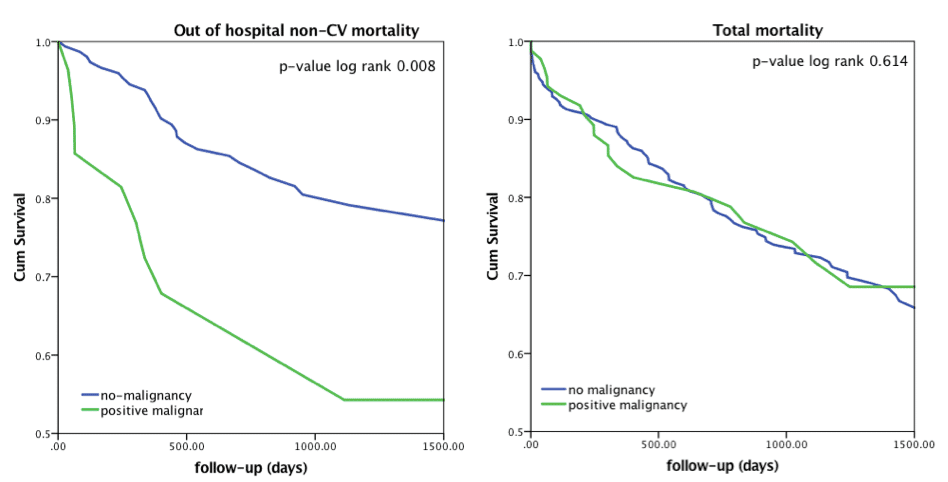
Transcatheter Aortic Valve Implantation in Patients with Previous Malignancy
2Department of Internal Medicine D, Sheba Medical Center
3Pinchas Borenstein Talpiot Medical Leadership Program, Sheba Medical Center
4Cardiac Surgery, Sheba Medical Center
5Sackler School of Medicine, Tel-Aviv University
Background: Transcatheter aortic valve implantation (TAVI) is rapidly becoming the treatment of choice for high-surgical risk patients with symptomatic aortic stenosis. Little is known regarding the outcome of TAVI patients with previous malignancy.
Methods: We investigated 479 patients who underwent TAVI in a tertiary medical center. Subjects were divided into 2 groups according to malignancy status: no history of malignancy (N=388) and positive history of malignancy (N=91).
Results: Mean age of the study population was 81±7 of which 52% were men. No major differences in baseline characteristics were found between groups. All cause mortality was 22% and 27% at a mean follow-up time of 812±635 days in patients with and without malignancy, respectively. Kaplan Meier survival analysis demonstrated no difference in all-cause mortality between groups. However, sub-analysis showed that patients with malignancy had higher long-term non-cardiovascular mortality rates compared with those without malignancy (figure). Multivariate cox regression analysis showed that while malignancy status did not affect prognosis regarding cardiovascular or overall mortality (HR 0.86 CI 0.52-1.42 p=0.56), it had a strong link to non-cardiovascular long-term mortality (HR 2.6 CI 1.13-6.12 p=0.024).
Conclusions: Patients with malignancy have good overall short- and long-term outcomes following TAVI but do suffer an excess of long-term non-cardiovascular death. Decisions regarding TAVI among oncological patients should be individualized according to their malignancy status and anticipated life expectancy.

Powered by Eventact EMS